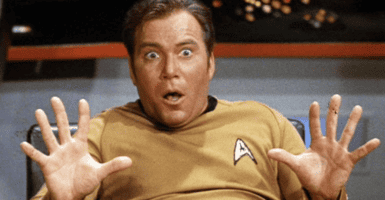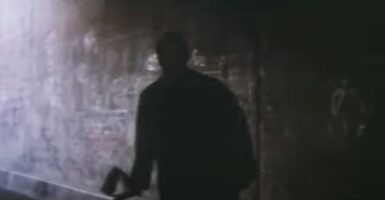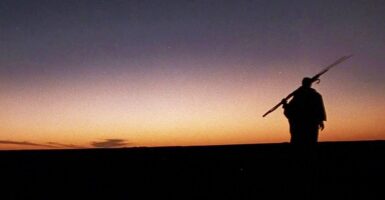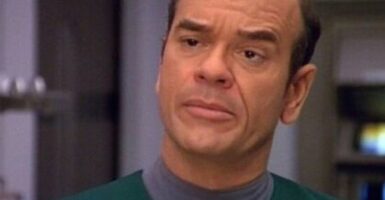Scientists Reveal Their Favorite Works Of Science Fiction
Here at GFR we cover anything that fits under the umbrella of our twin loves: science and science fiction. And just as the bleeding edge of our scientific understanding is forever pushing the boundaries of our science fiction, SF is itself inspiring fans to take transform their love of starships, robots, and the like into careers in real scientific fields. So what are some of the science fiction movies, shows, and books that real-life scientists love best? The Huffington Post recently asked a handful of scientists precisely that.
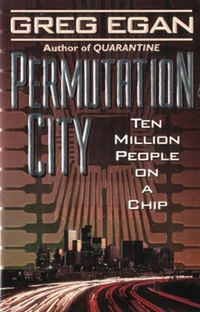 Dr. Max Tegmark is a cosmologist and physics professor at MIT, and the scientific director of the Foundational Questions Institute, which provides grants to “catalyze, support, and disseminate research on questions at the foundations of physics and cosmology.” Tegmark cites Greg Egan’s 1994 science fiction novel Permutation City as his favorite, explaining that Egan’s “explorations of the ultimate nature of reality blew my mind and inspired my own research.”
Dr. Max Tegmark is a cosmologist and physics professor at MIT, and the scientific director of the Foundational Questions Institute, which provides grants to “catalyze, support, and disseminate research on questions at the foundations of physics and cosmology.” Tegmark cites Greg Egan’s 1994 science fiction novel Permutation City as his favorite, explaining that Egan’s “explorations of the ultimate nature of reality blew my mind and inspired my own research.”
Dr. Sean Carroll is a theoretical physicist at the California Institute of Technology, and the author of books including The Particle at the End of the Universe and From Eternity to Here. He lists another semi-obscure work you might want to add to your Kindle: Robert L. Forward’s Dragon’s Egg. Carroll says, “It’s a story about life on the surface of a neutron star, which would ordinarily be considered completely outlandish. A good reminder that ‘life’ might take on very different forms than we ordinarily imagine. Here’s the Dragon’s Egg synopsis from Amazon:
In a moving story of sacrifice and triumph, human scientists establish a relationship with intelligent lifeforms — the cheela — living on Dragon’s Egg, a neutron star where one Earth hour is equivalent to hundreds of their years. The cheela culturally evolve from savagery to the discovery of science, and for a brief time, men are their diligent teachers.
Dr. Temple Grandin is an animal scientist, a professor at Colorado State University, and the author of The Autistic Brain. (She was also played by Claire Danes in the 2010 biopic Temple Grandin.) For her favorite, she sticks with one of the classics: Star Trek. She told HuffPo, “The one I’ve always liked the best was the one about the whales.” That, of course, would be Star Trek IV: The Voyage Home. “It had them coming to Earth and dressing up as Earth people. Some of the later movies haven’t been as good. They’re going with too ‘whizz-bam’ special effects.” From your lips to Roberto Orci’s ears, Dr. Grandin.
Center for SETI Research director Dr. Seth Shostak tips his hat to Polish science fiction writer Stanislaw Lem, whose works inspired the movie Solaris (both the 1972 and 2002 versions) and the upcoming Robin Wright Penn film The Congress. Shostak said:
Stanislaw Lem wrote a short story, ‘Golem XIV,’ in the early 1980s that is my go-to reference when anyone asks me, ‘What will the aliens be like?’ No, they’re not short, hairless, gray guys — they’re intelligent machines. And while Lem wasn’t talking about aliens in his story, I figure that any extraterrestrials we ever detect really are likely to have moved on from biological brains to cybernetic cerebellums.
 Dr. Chris Stringer, anthropologist at the Natural History Museum in London loves Terry Gilliam’s dystopic classic Brazil because it’s “quirky, with humor and horror juxtaposed, and full of little details about the alternative world that Terry Gilliam creates. And Michael Palin outstanding as a nice man turned into a torturer by the system.”
Dr. Chris Stringer, anthropologist at the Natural History Museum in London loves Terry Gilliam’s dystopic classic Brazil because it’s “quirky, with humor and horror juxtaposed, and full of little details about the alternative world that Terry Gilliam creates. And Michael Palin outstanding as a nice man turned into a torturer by the system.”
For Montana State University paleontologist Dr. Jack Horner, Steven Spielberg’s original Jurassic Park film is the top of the heap. Granted, Horner was a consultant on the movie, so he may be a bit biased, but he told HuffPo that “Jurassic Park is my favorite movie because the paleontologist Alan Grant says all the things I would have said if it had not been a movie!! And bringing back dinosaurs is a goal.”
Johns Hopkins University astrophysicist Dr. Adam Riess says he prefers his science fiction to be plausible:
My usual rule for such work is you can make up one outlandish concept that has some
foundation in science and then the story should follow the consequences of that concept. Here are ones I like, Contact – Carl Sagan; The Fountains of Paradise – Arthur C. Clarke; Childhood’s End – Arthur C. Clarke; The Songs of Distant Earth – Arthur C. Clarke; The Martian Chronicles – Ray Bradbury; Fahrenheit 451 – Ray Bradbury; Foundation series – Isaac Asimov; Silo saga – Hugh Howey; The Stand – Stephen King; Watership Down – Richard Adams; The Day of the Triffids – John Wyndham.”
Dr. Steven Strogatz, professor of mathematics at Cornell University said that Michael Cricthon’s The Andromeda Strain had him “riveted from the first sentence,” and singles out the 1970 sci-fi thriller Colossus: The Forbin Project for terrifying him as a young child. “And like everyone else,” he added, “I’m still trying to figure out 2001: A Space Odyssey.”
Materials scientist Dr. Ainissa Ramirez, who is also the co-author of the 2013 book Newton’s Football: The Science Behind America’s Game. She told HuffPo that she liked Octavia Butler’s Parable of the Sower because of the way it “described what the future could be in a very believable way.” She’s also a fan of Star Wars, saying that it “excited all of my senses and made me think that anything was possible. We all have a hero within.”
Space Telescope Science Institute astrophysicist Dr. Mario Livio loved the books of Jules Verne when he was growing up, in particular Around the World in Eighty Days, Journey to the Center of the Earth, and Twenty Thousand Leagues Under the Sea. He added, “In terms of films, I remember having been impressed very much at the time with 2001: A Space Odyssey, with Dr. Strangelove, and with Close Encounters of the Third Kind.”
 Olympia LePoint is an honest-to-gosh rocket scientist, and the author of Mathaphobia. She shared her love of Alfonso Cuaron’s Gravity, saying:
Olympia LePoint is an honest-to-gosh rocket scientist, and the author of Mathaphobia. She shared her love of Alfonso Cuaron’s Gravity, saying:
I was blown away by the stunning visual effects and three-dimensional-like movement. Plus, I am thankful that producers and writers cast a woman as an astronaut to bring science concerns to the forefront of American and international discussion… [Also] Back to The Future starring Michael J. Fox. Time travel in movies wasn’t uncommon before 1985, but the concept of building a ground propulsion machine from a DeLorean car inspired me to investigate aerospace engineering.
Biologist Dr. Danielle Lee is the author of Scientific American’s “Urban Scientist” blog, and a fan of Dune. “The old one with Sting,” she clarifies. “I love that movie with its messages of imperialism, environmental conservation, and social justice. ‘The Spice must flow. The Spice must flow!'” Be honest, Doc: it’s that scene with Sting in the metal thong that has you hooked, isn’t it?
Dr. Michael Shermer founded Skeptic magazine, and his favorite is a true sci-fi classic:
My favorite sci-fi film is the 1951 The Day the Earth Stood Still, a Christ allegory in which an alien named Klaatu (who takes the name ‘Mr. Carpenter’ while visiting Earth) admonishes humans for threatening nuclear annihilation and insists that they will not be allowed to join the planetary community as long as they retain nuclear weapons.
Last but not least, Dr. Jane Goodall’s name is practically synonymous with the study of primates, especially chimpanzees, and she was named a UN Messenger of Peace by Secretary-General Kofi Annan in 2002. Her picks aren’t strictly speaking science fiction, but we won’t detract any points because she’s awesome. She told HuffPo:
Three books of my childhood probably had the greatest impact on my life. The Story of Doctor Dolittle (by Hugh Lofting) and Tarzan of the Apes (by Edgar Rice Burroughs) inspired me to understand what animals were trying to tell us and instilled within me an equally strong determination to travel to Africa, live with animals, and write books about them. ‘The Miracle of Life’ was a large book my grandmother got for free by saving up coupons from cereal packets. It was by no means a book intended for children.









